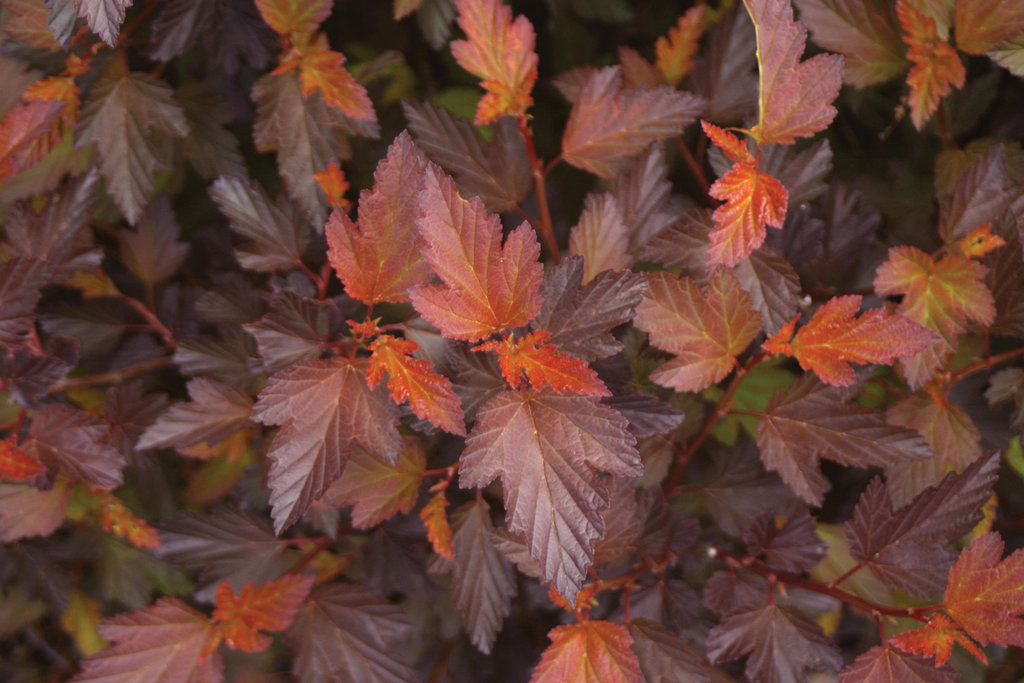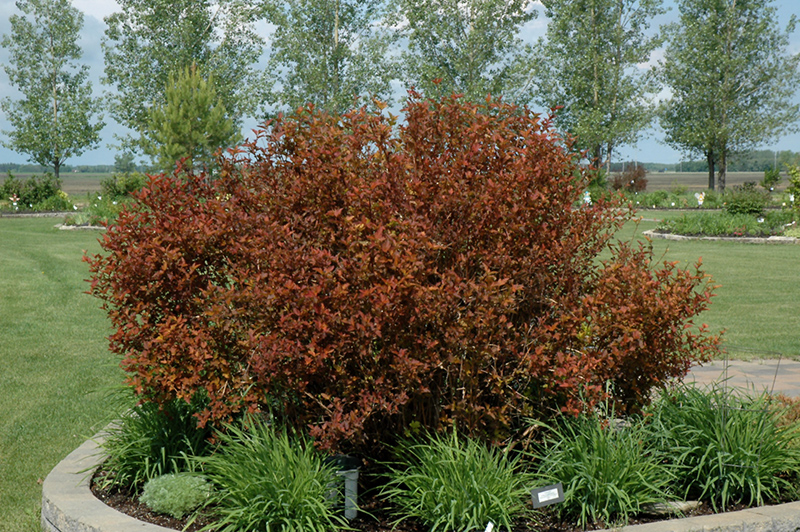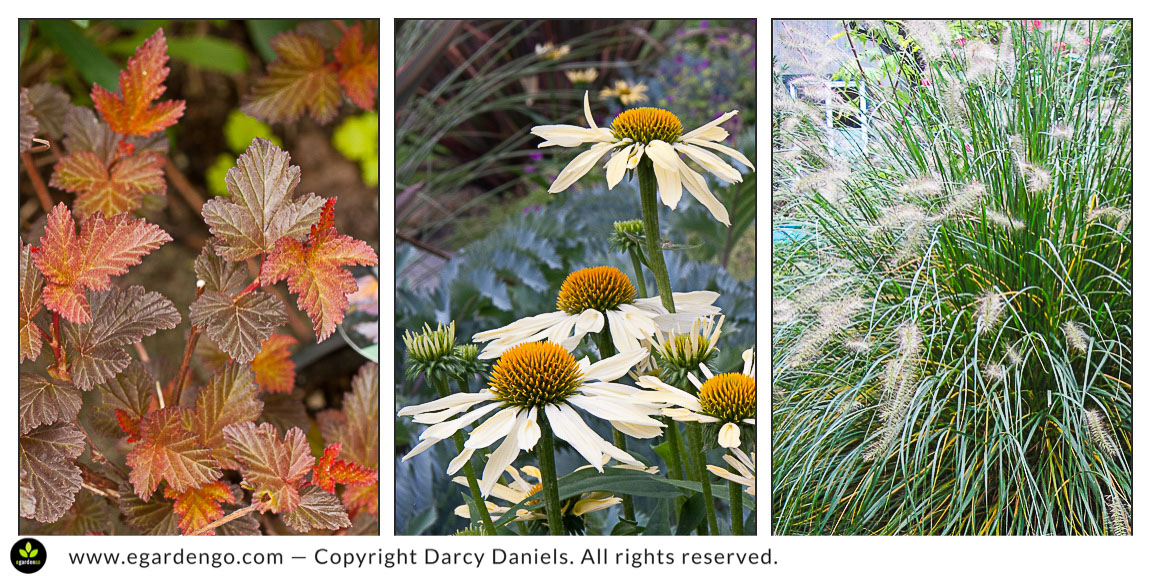Stunning Companion Plants For Coppertina Ninebark
Stunning Companion Plants for Coppertina Ninebark
Coppertina ninebark is a beautiful and versatile shrub that can add a touch of color and interest to any garden. It's known for its distinctive orange-red foliage that turns a brilliant scarlet in the fall. Coppertina ninebark also produces clusters of white flowers in the spring.
If you're thinking about adding coppertina ninebark to your garden, you may be wondering what companion plants would look best with it. Here are a few ideas:
- Spirea: Spirea is another deciduous shrub that blooms in the spring. There are many different varieties of spirea, so you can choose one that complements the color of your coppertina ninebark. For example, if you have a coppertina ninebark with orange-red foliage, you could plant a white spirea. Or, if you have a coppertina ninebark with scarlet foliage, you could plant a pink spirea.
- Clematis: Clematis is a vine that can be trained to climb up a wall or trellis. There are many different varieties of clematis, some of which bloom in the spring and others that bloom in the summer. You can choose a clematis that blooms at the same time as your coppertina ninebark, or you can choose one that blooms in a different season.
- Perennials: There are many different perennials that would look great with coppertina ninebark. Some good options include coneflowers, bee balm, and yarrow. These plants all have bright colors that will complement the coppertina ninebark's foliage. They also bloom at different times of the year, so you'll have flowers in your garden from spring to fall.

- Grasses: Grasses can add a touch of elegance and texture to your garden. They also come in a variety of colors, so you can choose one that complements the color of your coppertina ninebark. For example, if you have a coppertina ninebark with orange-red foliage, you could plant a golden oat grass. Or, if you have a coppertina ninebark with scarlet foliage, you could plant a purple fountain grass.

- Deciduous trees: Coppertina ninebark can also be planted in front of deciduous trees. When the trees lose their leaves in the fall, the coppertina ninebark's foliage will stand out even more. Some good options for deciduous trees include maples, oaks, and crabapples.

When choosing companion plants for coppertina ninebark, it's important to consider the size of the plants. Coppertina ninebark can grow up to 6 feet tall and wide, so you'll need to choose companion plants that won't outgrow it. You should also consider the sun and soil requirements of the plants you choose. Coppertina ninebark prefers full sun and moist, well-drained soil.
With a little planning, you can create a beautiful and stunning garden by planting coppertina ninebark with the right companion plants.
Coppertina ninebark is a beautiful shrub that can add a touch of drama to any garden. Its orange-copper foliage in the spring and fall is truly stunning. But what plants can you pair with coppertina ninebark to create a truly eye-catching display?
There are a few things to keep in mind when choosing companion plants for coppertina ninebark. First, consider the size of the shrub. Coppertina ninebark can grow up to 6 feet tall and wide, so you'll need to choose plants that won't be overshadowed.
Second, think about the color of the foliage. Coppertina ninebark's leaves are a deep orange-copper, so you'll want to choose plants that complement that color. Some good options include:
- Purple coneflower (Echinacea purpurea)
- Blue spruce (Picea pungens)
- Gold hosta (Hosta sieboldiana 'Gold Standard')
- Lamb's ear (Stachys byzantina)
Finally, consider the light requirements of the plants you choose. Coppertina ninebark prefers full sun, but some of its companion plants may prefer partial shade.
If you're looking for more information about coppertina ninebark companion plants, I recommend visiting Gardenia Inspiration. This website has a comprehensive list of plants that can be paired with coppertina ninebark, as well as detailed information about each plant's size, color, and light requirements.
FAQ of coppertina ninebark companion plants
Q: What are some good companion plants for coppertina ninebark?
A: Coppertina ninebark is a deciduous shrub that can grow up to 6 feet tall and wide. It has attractive, orange-red foliage in the spring and summer, and showy clusters of white flowers in the summer. Coppertina ninebark is a versatile plant that can be used in a variety of landscape settings. It is tolerant of a wide range of soil conditions and can withstand full sun to partial shade.
Some good companion plants for coppertina ninebark include:
- Other deciduous shrubs, such as lilac, spirea, and hydrangea
- Perennials, such as coneflower, bee balm, and daylily
- Groundcovers, such as hosta, lily of the valley, and creeping thyme
- Vines, such as clematis and honeysuckle
When choosing companion plants for coppertina ninebark, it is important to consider the plant's size, growth rate, and sunlight requirements. For example, if you are planting coppertina ninebark in a small space, you may want to choose smaller companion plants. If you are planting coppertina ninebark in a sunny location, you will need to choose companion plants that also tolerate full sun.
Q: What are the benefits of planting companion plants with coppertina ninebark?
A: There are several benefits to planting companion plants with coppertina ninebark. Companion plants can help to:
- Improve the overall appearance of your landscape
- Attract pollinators and other beneficial insects
- Help to suppress weeds
- Improve the drainage and soil quality
- Provide winter interest
Q: How far apart should coppertina ninebark companion plants be planted?
A: The spacing between coppertina ninebark companion plants will depend on the size and growth rate of the plants. For example, if you are planting small companion plants, you can space them closer together. If you are planting larger companion plants, you will need to space them further apart.
As a general rule of thumb, you should space coppertina ninebark companion plants at least 2 feet apart. This will give the plants enough room to grow and spread without crowding each other.
Q: What are some common problems that coppertina ninebark can have?
A: Coppertina ninebark is a relatively hardy plant, but it can be susceptible to a few problems, including:
- Leaf spot
- Powdery mildew
- Aphids
- Japanese beetles
If you notice any problems with your coppertina ninebark, you can treat them with an appropriate fungicide or insecticide. You can also help to prevent problems by planting coppertina ninebark in a sunny location with well-drained soil.
Q: How can I care for coppertina ninebark companion plants?
A: The care requirements for coppertina ninebark companion plants will vary depending on the type of plant. However, most companion plants will need regular watering, fertilizing, and pruning. You may also need to protect them from pests and diseases.
The best way to care for your coppertina ninebark companion plants is to research the specific care requirements for each plant. You can find this information in gardening books, online resources, or by talking to a local nursery or garden center.
Image of coppertina ninebark companion plants
- Coppertina ninebark and coneflower: This is a classic combination that looks great in any garden. The coppery-red foliage of the ninebark provides a backdrop for the bright yellow flowers of the coneflower.

- Coppertina ninebark and blazing star: Another great option for companion plants is blazing star. The tall, spiky flowers of the blazing star add height and interest to the garden, and they bloom at the same time as the ninebark.
- Coppertina ninebark and black-eyed Susan: Black-eyed Susans are another easy-to-grow perennial that looks great with coppertina ninebark. The yellow flowers of the black-eyed Susan provide a nice contrast to the coppery-red foliage of the ninebark.

- Coppertina ninebark and hydrangea: Hydrangeas are a popular choice for shade gardens, and they can also be planted with coppertina ninebark. The large, showy flowers of the hydrangea add a touch of elegance to the garden, and they bloom in a variety of colors, so you can find one that complements the coppery-red foliage of the ninebark.

- Coppertina ninebark and ornamental grasses: Ornamental grasses are another great option for companion plants. They add movement and texture to the garden, and they can help to fill in empty spaces. Some good choices for companion plants with coppertina ninebark include miscanthus, fountain grass, and blue oat grass.
Post a Comment for " Stunning Companion Plants For Coppertina Ninebark"